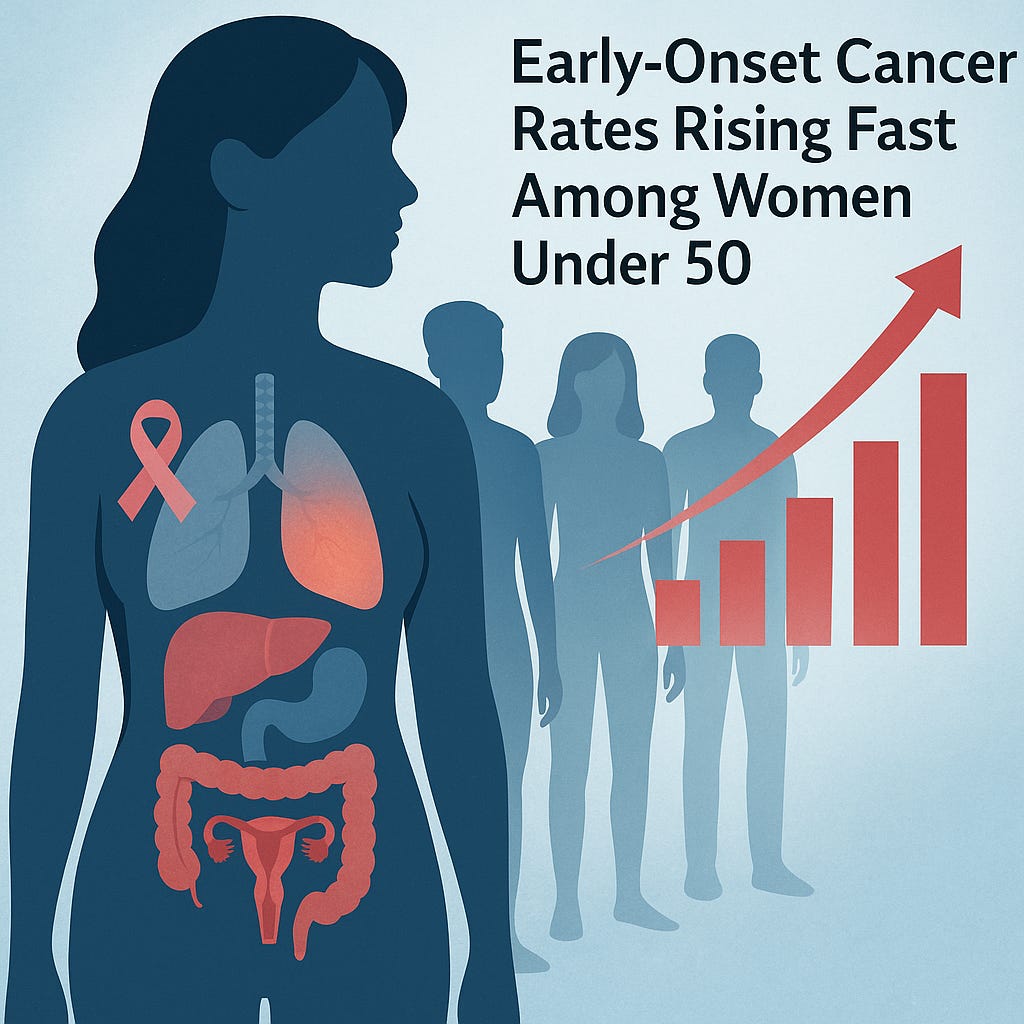Early-Onset Cancer Rates Rising Fast Among Women Under 50
Breast, colorectal, thyroid, and uterine cancers are climbing in younger adults, according to new U.S. data
Topline:
A major study by the National Cancer Institute shows that rates of many early-onset cancers, especially in women under 50 are rising sharply, with breast, colorectal, kidney, and uterine cancers leading the increase. These trends suggest a pressing need to reevaluate cancer screening and prevention strategies for younger populations.
Study Details
Keep reading with a 7-day free trial
Subscribe to Just Healthcare to keep reading this post and get 7 days of free access to the full post archives.


